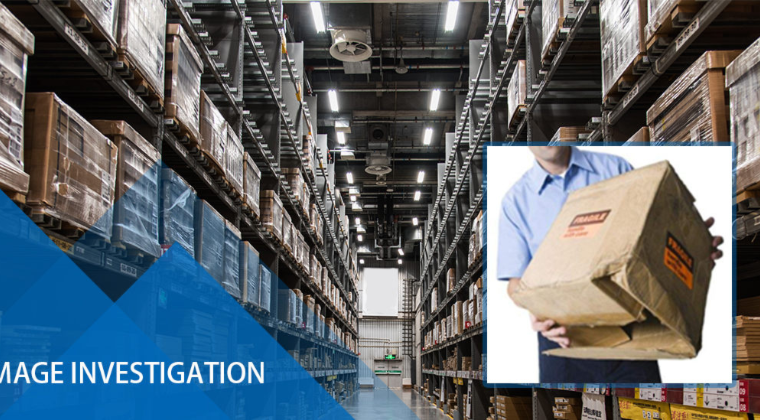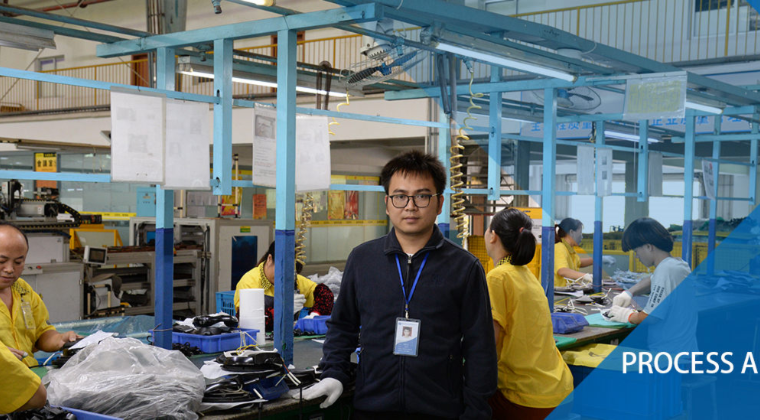Garment and apparel | Footwear | Home textile | Fabric | Bags and Luggage
Fabric inspections are essential quality control processes in the textile and apparel industry to ensure that the fabric meets the desired standards and specifications. It is the responsibility of both the textile supplier and apparel manufacturer to inspect all textiles to ensure their compliance with the buyer standard.
GIS Inspection is a trusted fabric inspection service provider. Our highly skilled team of inspectors is well-versed in fabric quality control standards and can assist you in ensuring that your textile products meet the highest standards of quality, safety, and performance.
To ensure your fabric products meet the requirement and standard, book a comprehensive fabric inspection with GIS Inspection today.
Content
What is Fabric Inspection?
Fabric inspection is the process of professionally checking the quality of the fabric before it is used for manufacturing garments, home textiles, shoes or other products. Fabric inspection help identify defects, inconsistencies, and flaws in the fabric, allowing manufacturers to maintain product quality and minimize production issues.
Any apparel or piece of clothing is valued or purchased by measuring the quality of the fabric. Whether it is the buyer, customer, or wholesaler of garments today all look for quality and standard fabrics.
Fabric inspection is significantly different from the inspection methods used for apparel, home textiles, and other textile products. While fabric inspection focuses primarily on the continuous surface quality, color consistency, width, weight, and the presence of defects such as weaving flaws or dye inconsistencies.
Fabric inspection uses a numerical designation for the grading of fabrics from a visual inspection. Normally, it’s also called fabric inspection 4-point or 10-point system. 4-point system is taken a priority to be used for third-party inspection agency. 10-point system is only to be used once it is requested by client.
Why is Fabric Inspection Important?
Fabric inspection is a structured process that systematically evaluates different aspects of fabric quality to ensure compliance with industry standards, assess durability, and confirm its suitability for the intended application.
It is a critical step in the textile manufacturing process that helps to ensure that the fabric meets the required standards before it is used to make garments or other products.
- Whether it is a reduction in productivity or increased overheads, garment brands and suppliers can face production challenges from defective fabric such as:
- Inconsistencies in the cuttable width will impact their fabric consumption and wastage.
- Different color shading among rolls or within the same roll impacts product quality and requires special management during the cutting, sewing, packing and other production steps to segregate by color shades.
- High defect rates in the fabric (such as stains, holes etc.) will impact the consumption per garment and increase the risk of defects found in the garment.
ASTM D5430 4-Point System, the Fabric Inspection Standard
There are several grading systems adopted for fabric inspection such as the 10-point system and the Dallas system. Among all, the 4-point system has become the most commonly adopted system for fabric inspection.
Sampling and Sample Size
Sampling for the inspection of bulk fabric generally does not follow the same parameters as the ones for garments.
Typical sampling parameters for Fabrics are listed below.
|
Lot size |
Sample size |
|
<500 yards / meters |
Full sample |
|
> 500 yards / meters |
(Square root of lot size) X 10 |
The required Sample Size will be selected randomly from the rolls present in the shipment. The entire length of each roll or piece selected will be inspected until the required Sample is completed.
A minimum of 2 roll per color should be selected.
Usually, one inspection (one sampling) is only to cover the same style of fabric. The same style means the same content of fiber, the same yarn size, the same construction, the same fabric weight, the same cuttable width. Multiple colors of the same style of fabric can be combined into an inspection report.
ASTM D5430 – 13 Standard Test Methods for Visually Inspecting and Grading Fabrics
ASTM D5430-13 test method describes a procedure to establish a numerical designation for grading of fabrics from a visual inspection. It is used for the delivery and acceptance of fabrics with requirements mutually agreed upon by the purchaser and the supplier.
How Does 4-Point System Work?
Provided as a means of defining defects according to their severity by assigning demerit or penalty points. Owing to the scale, consistency, and importance of the defect, the 4-Point System assigns penalty points from 1 to 4. The total defect points are calculated for 100 square yards of fabric, and then based on the company’s predefined acceptance criteria, the fabric roll is graded.
|
Defect ( English Units) |
Defect Size ( SI Units) |
Penalty Points |
|
Defect≤3 inches |
Defect ≤75 mm |
1 |
|
3 inches |
75 mm |
2 |
|
6 inches < defect ≤9 inches |
150 mm < defect≤230 mm |
3 |
|
Defect <9 inches |
Defect < 230 mm |
4 |
When assessing, defects that are not visible on the face of the fabric are not counted, and a maximum of 4 points are deducted for any single defect on the same fabric.
What is the pass and fail criteria of the 4-point system?
The result is calculated by an equation below:
Points per 100 square meters =
(Total points per roll x 10000) / Length inspected (meter) x cuttable width (cm)
Some factories establish that up to 40 points per 100 square yards is acceptable, however, in the apparel and textile industry, apparel brands and buyers set their own standards for acceptable points. If your fabric is of higher value, you can consider lowering the passing score to below 20.
Main Tests Performed for Fabric Inspections
When examining the quality of the fabric, different criteria are used by the inspectors.
Packing Check
The identification stickers, shipping marks, packing lists and packing quantity are checked against the requirements and specifications.
Product Conformity
Inspectors work either with fabric samples provided by clients as the comparison samples or, in the absence of fabric samples from clients, the beginning and end of the roll will be cut for conformity checking against the inspected roll.
Conformity is assessed on
- Style
- Material
- Color
Fabric Weight Check
The weight of the fabric is a key indicator of the conformance of these materials. Measured mostly in GSM (grams per square), the fabric weight is a good reference of fabric density, composition and construction.
To measure the weight of a woven fabric, a sample is cut out by a circle cutter and weighed by one roll of each lot. For knit fabric, a minimum of 10% of rolls from each lot is to be examined for weight.
Bow and Skew Check
The general acceptable tolerance is 3% if no specified from client.
Color Shading Check
Check for color shading differences within a dye lot may not vary within a roll/piece (side to side, side center side, or end to end shading) or between rolls/pieces, he shade must match with the approved sample standard.
Compare against the same lot product Grey scale 4-5 is general acceptable level if no requirement from client. If color shade is out of acceptable level, the inspected roll will be down grade instead of count into penalty point.
Roll length Check
The roll length is measured by a meter counter. Fabric roll length may be rejected when shorter than 2% compare against ticket length. Penalty point will not be assigned, but will put into conclusion of report. If the total measured length is less than 1% total ticket length, the whole shipment lot may be rejected.
Fabric width Check
Fabric width should be checked 3 times for inspected roll. Beginning, middle and end (minimum 5 yards from beginning and end) Assign 4 points to each linear yard of fabric where the cut table width is less than the minimum specified. The roll will be down grade instead of assign penalty point when the Fabric width of whole roll is less the specification.
Wet & Dry Rub Test
The wet and dry rub tests assess a fabric’s resistance to color transfer or abrasion. These tests involve rubbing a standardized cloth against the fabric to determine if color bleeding or wear occurs.
The Common Issues that fabric inspection may find
When performing fabric inspection, the issues that may commonly be found are:
- Discrepancies in color or texture between the different batches or rolls of fabrics;
- Rolls with varying widths that would lead to wastage once cut;
- Fabric that has been provided with defects (see more on this later), again leading to wastage or defective products;
- Incorrect weight of fabric provided in the case of a fabric where different weights are available;
- Fabric with a defective design or print or even a totally wrong one;
- Incorrect yarn count, composition, density of fabric provided (this can only be measured in a testing lab, and in many factories an inspector does not have the capability to do so);
- Packing and labeling problems.
Conclusion: GIS Fabric Inspection and Quality Control Service
Fabric inspection is crucial to ensure fabric quality in terms of color, weight, measurement and defects. Fabric inspection can help prevent production challenges, reduce wastage, and improve customer satisfaction.
If you are looking for a quality control company in China to help you conduct fabric inspection professionally, contact GIS Inspection.
As a leading provider of quality control services in China and Asia, with a team of experienced and qualified full-time inspectors who can perform fabric inspection according to your requirements and standards, help you ensure the quality of your fabric and make sure your business success.










